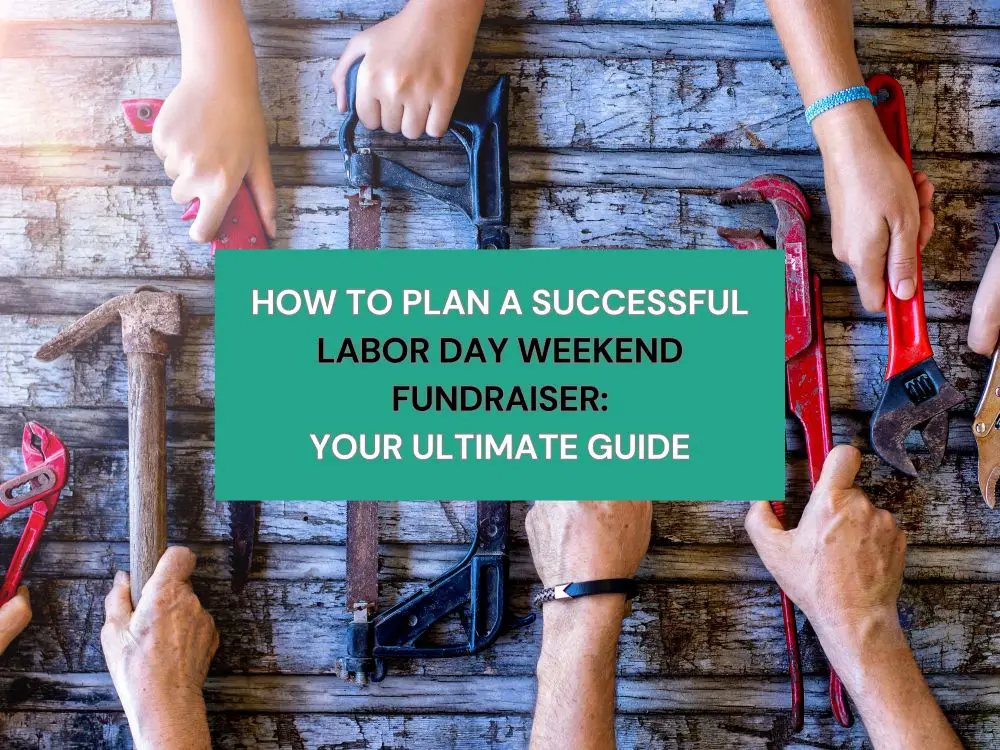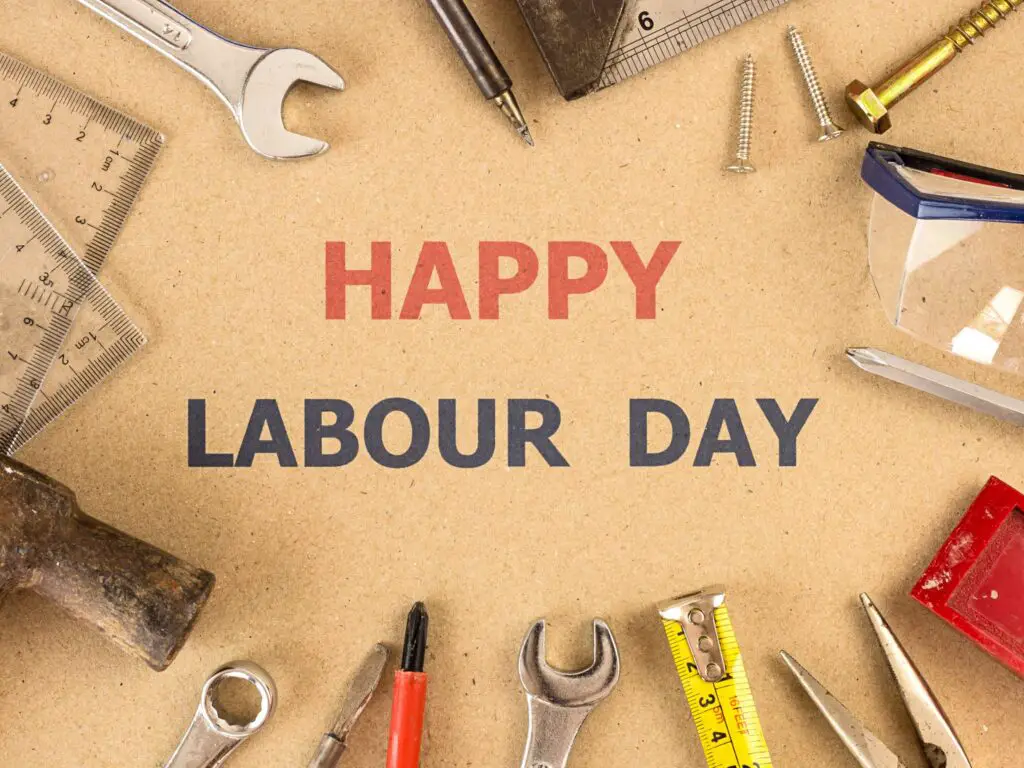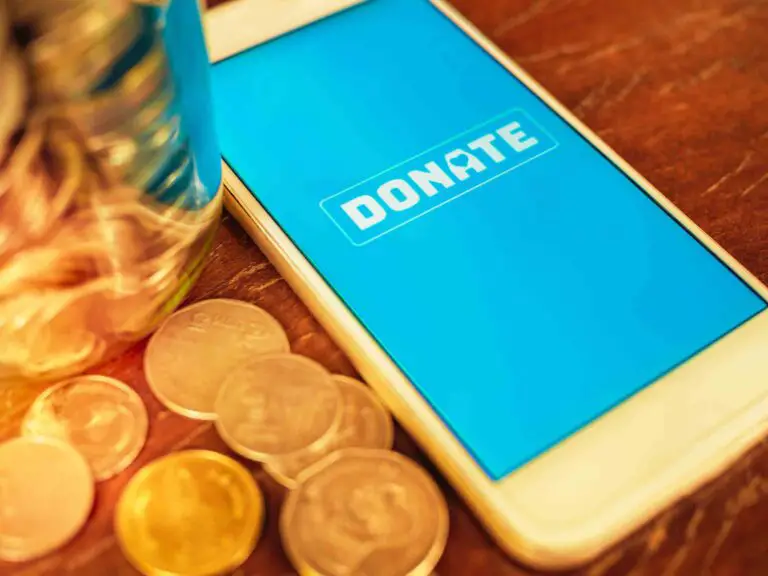How to Plan a Successful Labor Day Weekend Fundraiser: Your Ultimate Guide
This post may contain affiliate links. If you purchase through one of these links, I may receive a small commission at no extra cost to you. As an Amazon Associate, I earn from qualifying purchases.

Are you stuck trying to figure out how to plan a successful Labor Day Weekend fundraiser? Do you feel like your past events didn’t raise enough money? Maybe too few people showed up, or your volunteers were overwhelmed. Or maybe you’ve never hosted a fundraiser before and don’t know where to begin. You’re not alone. Fundraising during a long weekend can be powerful, but only if you do it right. Labor Day Weekend brings in big crowds, but without a plan, it also brings stress, confusion, and low returns.
This blog is your full solution and answers every question about how to plan a successful Labor Day weekend fundraiser.
It gives you a proven plan that works—simple, clear, and easy to follow. You’ll learn how to choose the right event, promote it the smart way, bring people in, and raise money without burning out your team. It’s packed with event ideas that work during Labor Day, timelines that keep you on track, and strategies to help you collect donations even after your event ends. No fluff. No filler. Just steps that raise real money and help you build something long-term.
This article covers everything: goal-setting, budgeting, picking the perfect event, booking the location, promoting across multiple platforms, getting sponsors, collecting money on-site, and wrapping up strong. You’ll get a checklist, real examples, and fundraising tactics that are built for the energy and opportunity that Labor Day brings. Whether you’re doing this for a school, church, nonprofit, or local cause, this is the roadmap you need to get real results.
Key Takeaways
Use Labor Day’s built-in traffic—parades, parks, and fairs—as a setting or partnership to tap into existing crowds.
Promote around the “last summer weekend vibe” to attract crowds looking for one final, feel-good community event.
For the best turnout, plan the event when people aren’t traveling or prepping for the week ahead.
How to Plan a Successful Labor Day Weekend Fundraiser That Makes an Impact
Labor Day Weekend is a golden chance to raise big funds. People are free. They’re ready to spend. But you need a sharp plan that grabs attention, keeps costs low, and gets people excited. That’s exactly what this blog gives you.
This article breaks down every detail on how to plan a successful Labor Day weekend fundraiser. You’ll learn step-by-step how to choose the right event, set your goals, gather the right team, promote like a pro, and keep the money flowing. Plus, you’ll get real ideas, action tips, and mistakes to avoid. The best part? Every section is built for fast reading and real-world use.
Let’s get started.
Why Labor Day Weekend Works So Well
Labor Day Weekend brings in families, travelers, and locals all in one. People want to enjoy their last summer break. They want food, music, games, and good company. And they’re open to spending, especially if it supports a cause.
If you set things up right, you’ll reach more people in one weekend than you might in a whole month. You get attention, foot traffic, and a fundraising window when everyone’s already in a fun mood.
But without a clear plan, things fall apart. That’s why this next section matters.

Step 1: Pick One Clear Goal
Start with the end. Ask:
- Are you raising money for a specific project or need?
- Is this fundraiser also about building awareness?
- Do you want to grow your donor list?
Write it down. Keep it simple. Every decision should follow this goal. For example, if your goal is to raise $5,000, your event must attract enough people to make that possible, even with basic ticket sales, donations, or sales.
Step 2: Choose the Right Type of Event
Your event must match the season, space, and crowd. For Labor Day Weekend, people want easy fun. Don’t overcomplicate it. Stick to things that are relaxed, outdoors, and kid-friendly.
Great Labor Day Fundraiser Ideas:
- Pancake breakfast in the park
- BBQ cook-off with entry tickets
- Family picnic with raffle games
- Outdoor movie night with popcorn sales
- Labor Day fair with vendors and local sponsors
- Cornhole or softball tournament with entry fees
- Water games or dunk tank challenges
- Classic car show with donation-based voting
Each of these works well when paired with food, music, and clear calls to give.
Related Articles:
Fundraising Ideas for Teachers: 15 Impactful Strategies
15 Easy Mental Health Fundraising Ideas for Impact
15 Unique, Money-Making Fundraising Ideas for Adults
Step 3: Lock the Location Fast
Labor Day weekend spots go fast. Parks, halls, and open areas fill up weeks or months before. Book early and know how many people you can handle. While booking a location, make sure to understand all the rules like the noise limits, electricity access, food permits, and insurance.
If you’re working with a city or town, get paperwork in early. Ask if they’ll waive fees for a nonprofit.
Step 4: Build a Sharp Team
Don’t do it alone. You can’t run a successful Labor Day fundraiser by yourself. You need a small, focused team you can count on. Don’t aim for a huge crew—just a few reliable people in the right roles. Break the team into key areas: one person handles promotion, one takes care of logistics and supplies, one runs the money and donations, and one leads the volunteers on the day of the event. Clear roles prevent confusion and speed things up. A tight team that knows exactly what to do will always beat a big group with no plan.
- Event lead (handles the schedule and big picture)
- Volunteer manager
- Sponsorship/fundraising coordinator
- Promotion lead (social media, posters, outreach)
- Setup/takedown team lead
Keep it lean. Use group chats and weekly check-ins to stay on track.
Step 5: Set a Budget That Makes Sense
Don’t spend what you don’t have. Always start with this rule: your total cost should never go over 30% of what you plan to raise. If you expect to bring in $10,000, your full budget should stay under $3,000. That includes food, rentals, permits, signs, supplies—everything. If you go over that, you risk cutting into the money meant for your cause. Keep costs low by using free venues, getting sponsors, borrowing equipment, and asking for in-kind donations. A fundraiser only works when what you raise is much more than what you spend to make it happen.
Focus on what matters:
- Food (keep it simple: hot dogs, chips, lemonade)
- Tables, tents, sound systems (ask for donations or free rentals)
- Permits and safety (don’t skip them)
- Marketing (boosted posts, printing flyers)
Ask local businesses to sponsor food, prizes, or services. Offer to promote them in return.
Step 6: Promote Like a Pro
You need to start early. And you need to hit the right places. Promotion doesn’t work if you wait until the last minute or post in the wrong spots. Start at least five weeks before the event. Begin with your warm audience—friends, past donors, volunteers, and local groups. Then spread out to places where your target crowd already hangs out: local Facebook groups, community centers, schools, churches, gyms, and coffee shops. Online and offline both matter. If you wait too long or post in the wrong places, people won’t see your event until it’s too late, and that means fewer guests and fewer donations.
4-5 Weeks Out:
- Start posting on Facebook, Instagram, and WhatsApp groups.
- Email your list. Add a countdown.
- Share behind-the-scenes photos to build hype.
2-3 Weeks Out:
- Post every 2 days. Share details: time, place, what to expect.
- Post short videos of volunteers prepping.
- Share past photos if this event has happened before.
Final Week:
- Boost a post with your event flyer to reach locals.
- Ask all volunteers and team members to post and share.
- Remind your email list again. Add the donation link for those who can’t come.
- Print posters. Drop them in cafes, schools, and community boards.
- Ask local businesses to promote in their windows.
Step 7: Make It Easy to Give
The more ways people can give, the more you’ll raise. Set up digital giving before the event.
- Use QR codes on signs
- Set up a mobile payment (like UPI, PayPal, Venmo, etc.)
- Add a clear “donate” button on your website or event page
- Use cash boxes or card readers for in-person giving
Also, collect names and emails of attendees so you can follow up later. Use a signup sheet or quick form.
Step 8: Add Small Fundraisers Inside the Event
Don’t rely on just one stream of income. Layer it. One entry ticket or one donation jar isn’t enough. Add simple money-makers inside your main event. Sell food, run a raffle, set up a photo booth, and offer face painting or games with small entry fees. These little extras add up fast. If someone doesn’t donate big, they might still spend on snacks or fun. The more chances you give people to give, the more money you raise without needing a bigger crowd.
- Add a silent auction
- Host a 50/50 raffle
- Set up a photo booth with donations
- Offer “shoutouts” or prizes in return for small donations
This adds fun and raises more money without extra work.
Step 9: Thank People Publicly and Promptly
After the event, post photos, videos, and thank-you notes within 24–48 hours.
- Tag your donors and sponsors
- Post totals raised (if appropriate)
- Thank your team and volunteers with a shoutout
- Email all attendees with a thank-you message, next steps, and donation link
This shows you’re organized and makes people more likely to help again.
Step 10: Track What Worked and Save It
Right after the event, sit down and list:
- What worked
- What didn’t
- How much was raised
- How many people came
- What tasks were hardest
- Which vendors or sponsors were reliable
Save it all in one folder. Next year’s event will be 5x easier to plan.

Real Mistakes to Avoid
Don’t skip these:
- No clear fundraising goal
- Trying to do too much
- Poor weather backup
- Last-minute location booking
- Not promoting early
- No follow-up after the event
Final Thoughts
Planning a Labor Day Weekend fundraiser isn’t about doing more—it’s about doing the right things in the right order. When you set a clear goal, build a small but sharp team, promote early, and create an event people actually enjoy, fundraising becomes easier and more rewarding. Labor Day gives you the perfect setup: the crowds are out, the weather’s still good, and people are ready to connect. Use that momentum to your advantage.
Follow this guide from start to finish. Stick to the checklist. Keep the energy up. And don’t forget to enjoy the day. When you run an event that brings people together and supports a cause, you don’t just raise money—you build something people remember.
This is your chance to raise big money during a weekend built for fun. Follow the steps. Use the checklist. Avoid the common traps.









